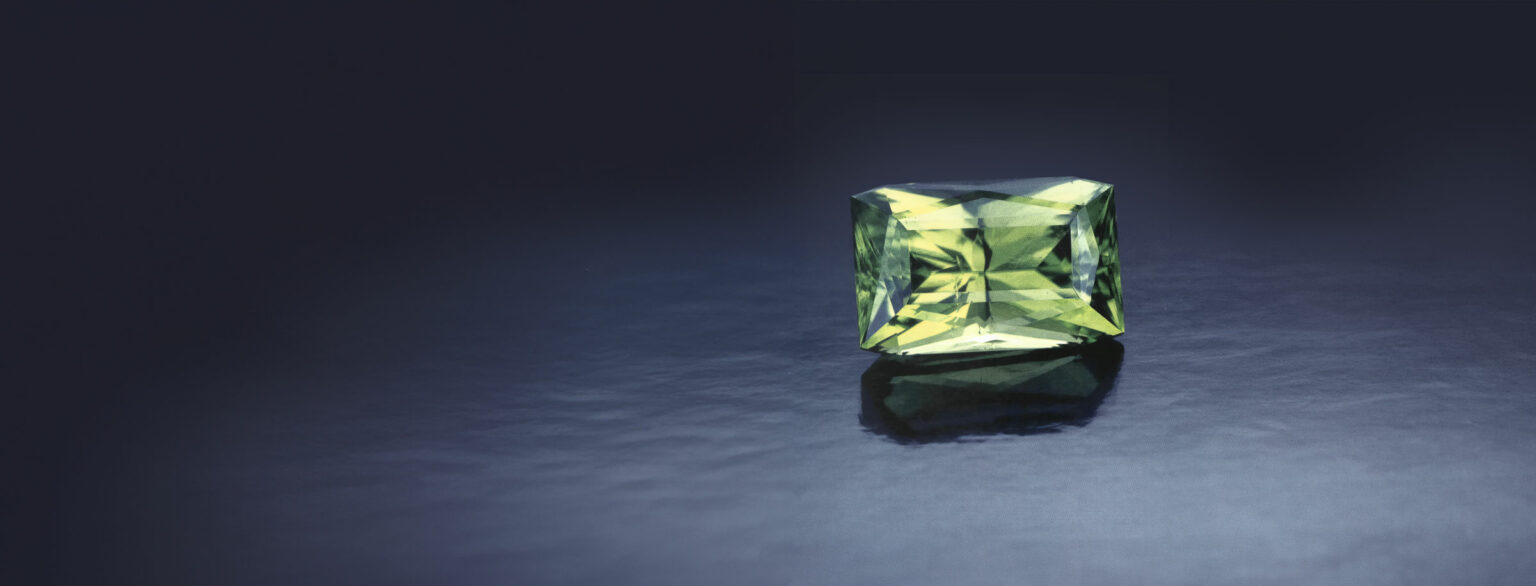Options for retirement careers and sidelines are few in Globe, Ariz., a desert town 90 miles east of Phoenix. So why not open a takeout place or pizza parlor? Globe has only 5,000 residents, that’s why. How about a tourist shop? Nah, the San Carlos Apache Indian reservation, 20 miles east of Globe, grabs most visitors.
Luckily for Tyree Trobaugh, a miner who retired in 1971 at age 65, the reservation is the site of the world’s largest peridot deposit, producing, says the U.S. Bureau of Mines, at least 80%—possibly as much as 95%—of all current supply. What’s more, the Apaches, to whom the U.S. government awarded mineral rights decades ago, prefer to sell the rough that they alone are allowed to dig to a small number of nearby dealers, most based in Globe.
Trobaugh has been one of this handful for the past 20 years. Nevertheless, the decision to become a peridot specialist has seemed a particularly sound one of late now that the gem, the birthstone of August, has come its closest ever to staple status in jewelry stores.
As a result, Trobaugh finds himself buying, on average, hundreds of pounds a week of freshly mined material from about 100 different Indians. “They come with anywhere from 1 to 500 pounds of peridot, mostly small in size, and piled in everything from cereal bowls to buckets,” he says.
Peridot doesn’t make millionaires of the Indians who mine it. To the contrary, Trobaugh estimates that total yearly revenues to the Indians probably don’t exceed $250,000—despite the fact that at least 1 million carats of it are mined on the San Carlos reservation annually.
At around $7 to $8 per pound, peridot rough must be found in large lots for mining to pay off. The hundreds of Indians engaged in digging for the gem, often in family teams, gather as much of it as they can in a short period, then dispose of it as quickly as possible. “The money they’re paid is what they eat on,” Trobaugh explains. “That’s why they can’t afford to hoard peridot and why I’m pretty sure none of the Indians is making a big living off mining.”
But at least it’s a meal ticket. And with peridot gaining swiftly in popularity, the value of Arizona production soared from $884,000 in 1990 to $1.7 million in 1991) demand is likely to make mining it a meal ticket for more and more Apaches.
Light and Lively
While not yet a craze like blue topaz or amethyst, peridot has reached the lower rungs of vogue status. This status makes sense at a time when clothing designers are making heavy use of light, vibrant yellow-green colors which they call the likes of “leaf,” “palm,” “jade” and even “golf.”
Ironically, there was a time when the jolly lifesaver green of Arizona peridot was looked upon with furrowed brows. Proper peridots were supposed to exhibit the graver green of the Burmese and Egyptian varieties. Connoisseurs and purists still consider stones from Burma’s Mogok tract and Egypt’s Zabargad Island the best of the breed. But a new generation reared on American peridot (supplies from Burma and Egypt are a trickle) has taken to its light and lively color.
What’s more, this taste is more than mere accomodation to the fact that Burma and Egypt are largely has-beens among gem producers. For one thing, most of the new generation of gem dealers, jewelry designers and retailers have little or no familiarity with Burmese peridot. For them, Arizona defines the range of color possibilities for this gem.
Those possibilities are completely different from those for Burmese and Egyptian stones. While Arizona peridot, like all other deposits of this olivine, is found encased in or extruding from volcanic rock such as basalt, geological circumstances different from those in Mogok and Zabargad allowed formation of typically smaller crystals.
As a result, says Phoenix gem dealer Roland Naftule, Nafco Gems, “The norm for finished Arizona peridot is 1 natre or less. Stones up to 4 carats are common, but from there to 12 carats they are rare, 12 to 20 carats very rare and above 20 carats almost impossible to find. On the other hand, you frequently see large Burmese peridots.”
A Case of the Fuzzies
Given the preponderance of sub-carat peridots, the gem is most often used as an accent stone or part of a combination of small stones. In sizes below 1 carat, peridot is certainly one of the most affordable green gems, generally $5 to $10 per carat
for clean, bright stones. Prices jump to $25 to $40 per carat for inclusion-free stones between 2 and 4 carats, then pole vault to as high as $150 per carat for fine 10-caraters. Fine stones above 20 carats will cost considerably in excess of $200 per carat.
That is, provided they’re clean and crystalline—not included or fuzzy. Inclusions, some different localities have their own signature inclusions, some fluid, some solid. (Burmese peridot, for instance, is plagued by tiny flakes of biotite which cutters call “rain.”) Arizona crystals are usually so heavily included that even when sizable, large stones are impossible to cut from them.
Regardless of origin, peridot can be distinguished from other green stones by its extreme birefringence (the breakup of single light rays into double rays moving at different speeds and at right angles to each other). This gemological phenomenon can inflict serious aesthetic damage. “You stare into the stone and you feel like you’re seeing double,” says lapidary Jerry Green of Reginald C. Miller Inc., New York.
To minimize the effects of birefringence, Green pays special attention to pavilion facets when cutting in order to give stones compensating brightness from their bottoms.
Because peridot is a fragile stone with a hardness of 6½ to 7 on the Mohs scale, it is pretty much exempt from general ring use but ideal for pendants and earrings. Besides being susceptible to scratching or abrasion, peridot tends to crack when subject to temperature extremes. “The stone is heat-sensitive,” says Green. “Many stones are ruined in steam.”
These drawbacks notwithstanding, peridot remains the most affordable green gem anywhere. Sheer abundance helps. In his book, “Gemstones of North America,” author John Sinkankas estimates that between 25% and 40% of the volcanic rock at San Carlos contains peridot. And since much of the deposit has yet to be worked, Arizona will continue to be the world’s main source of peridot for decades. “I’ve got two tons of the stuff stockpiled right now,” says Trobaugh. “I’m sure others can say the same.”
Please note: this profile was originally published in 1992 in Modern Jeweler’s ‘Gem Profiles/2: The Second 60’, written by David Federman with photographs by Tino Hammid.
The 4.65-carat Arizona peridot shown in the header image is courtesy of Pala International Inc., Fallbrook, Calif.






